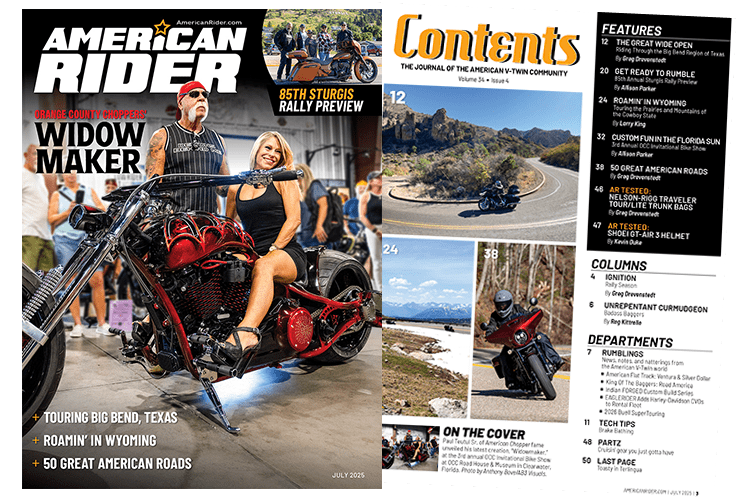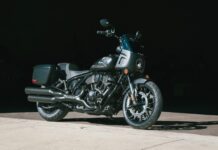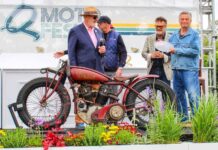The Central Coast Classic Motorcycle Show is like a nice bowl of gumbo: wholesome and with a little bit of everything.

Rather than feature a single marque for the 12th annual event in San Luis Obispo, California, the meet hosted the Vintage Japanese Motorcycle Club, which itself is 45 years old. Gracious, time flies when yer gettin’ old.
Related: AHRMA Classic MotoFest Series Keeps the Tradition Alive
The event took place on the grounds of the Mountainbrook Community Church overlooking SLO-town, with sparkling weather following the morning fog, about 50 show entries, and a full roster of swap meet vendors. The field events included a piston toss, a tire roll, and the Best-Sounding motorcycle competition. Sadly, the slow race has been consigned to history due to liability issues.
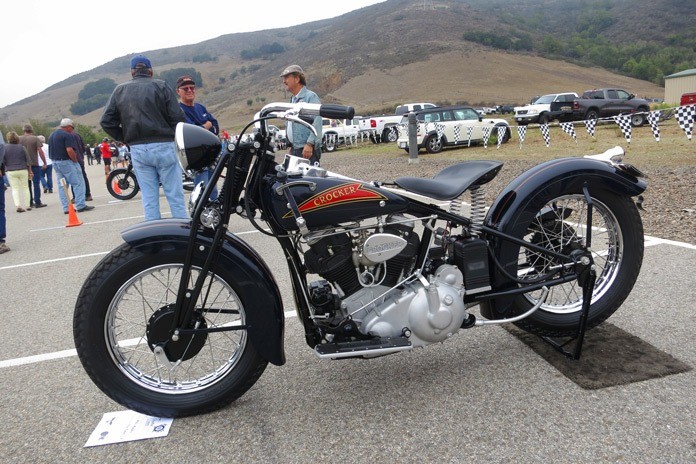
In addition to British, American, and European classes, the judges considered the categories of Pre-1941 bikes, On- and Off-Road Competition machines, Cafe Racers, Hand-Built bikes, and a class for Original/Unrestored machines. New this year was a class for Young Builders, established to encourage “younger enthusiasts in the passion of preserving, restoring, and enjoying classic motorcycles.”
While the number of American V-Twins had dwindled this year, those on hand represented a wide spectrum of time, style, condition, and purpose.

The earliest example was Doug McKenzie’s unrestored 1916 Harley-Davidson F model, which had sat in a Massachusetts barnyard for some 40 years. “But the magneto didn’t need to be rebuilt, and the clutch worked perfectly,” McKenzie said. “The first few times I rode it, it had the original spark plugs.” The only replacement part on the bike is the exhaust pipe because the original had long since rusted away. If there was an award for patina, this bike would have been the obvious winner.

Two notable figures in the classic/vintage realm were on hand: Steve Huntzinger and Mike Madden. Huntzinger has become one of the top restoration practitioners in the country after a modest start to his career.
“My first build was a 20-inch bicycle with a Briggs & Stratton engine,” Huntzinger said. His first “real” motorcycle? “My 1912 Harley Single, which I still have.”
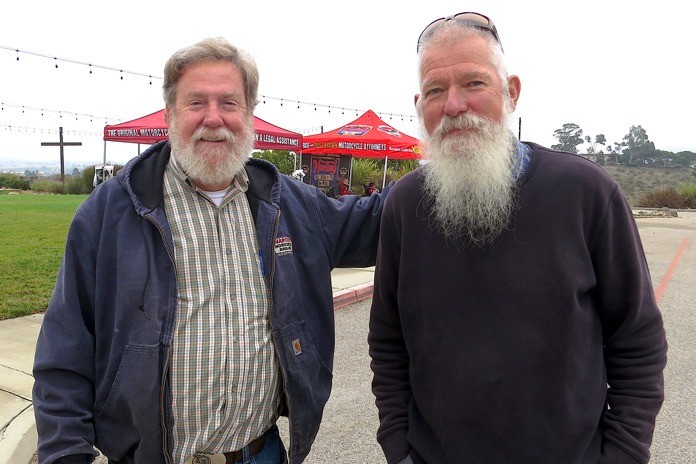
Asked if he had a favorite restoration between Indian and Harley in terms of the original quality in design and components, he replied, “Well, they’re all unique. But I can say that I never rode my Knucklehead again once I rode an Indian. That was the end of that. Of course, the Harley guys don’t like to hear that.”
Madden interjected. “The last good Harley was built in 1915. They went downhill after that. They got heavier and bulkier.”
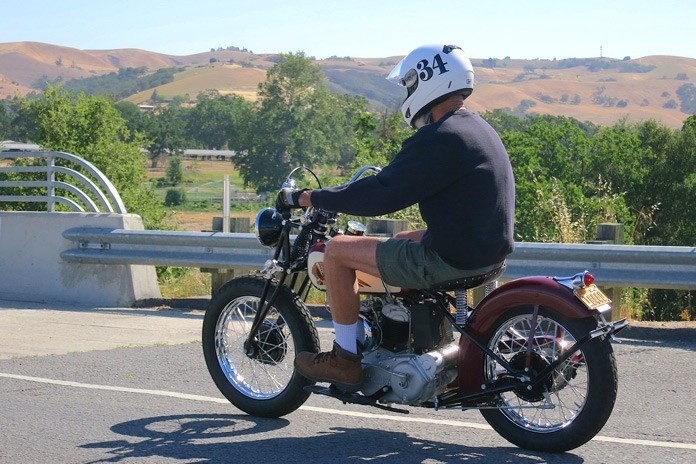
When he’s not working on a commissioned restoration, Huntzinger works on his own cars and motorcycles. He has a ’32 Ford sedan driver and a ’57 Ford Thunderbird, and he is working on a ’32 coupe chassis with a Model A body. His bikes include a ’39 Indian Four, a ’47 Scout, and a ’40 Scout bobber. His 1971 Honda CB750 is a clone of the first custom he built 50-some years ago while working at a Honda shop in Pasadena. “I had to sell the first one,” he said, “but this one is an exact copy.”
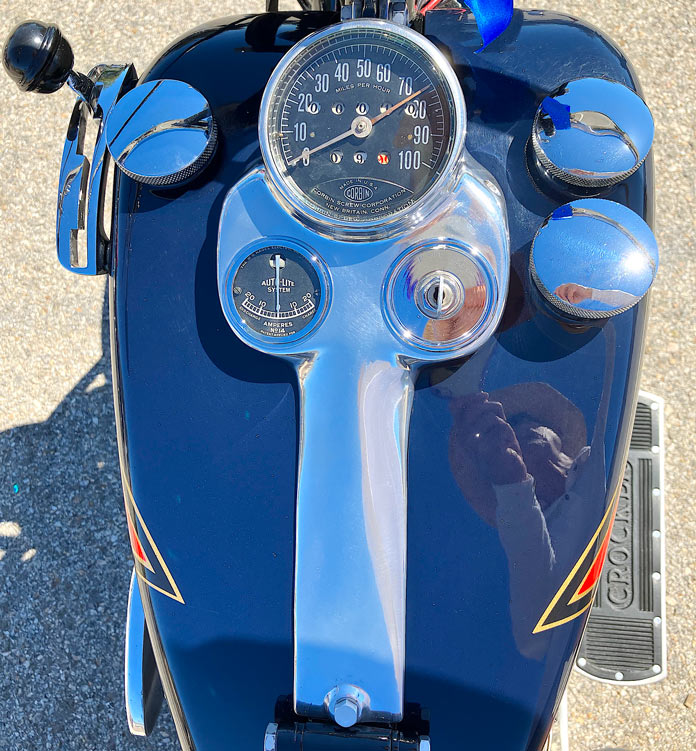
Madden, whose Huntzinger-restored 1940 Crocker won Best in Show at the 2006 Legends of the Motorcycle event in Half Moon Bay, runs a diesel maintenance shop in Paso Robles.

“We work on motorcycles when we have time,” he explained. “Steve’s helping me out with the finishing touches on an Ace Four.” Madden has three Crockers, all Huntzinger restos, and his 1939 “Small Tank” took best American honors at the Central Coast Classic.
Huntzinger’s restoration work is revered across the country, so we asked how he charges for his work. “Totally time and materials,” he said.
Madden jumps in again: “It depends on the attitude. It’s real simple, he works on a retainer basis: You give him a wad, and he’ll call you when it runs out. ’Cause he quits. It’s real simple.”

“It works,” Huntzinger said. “I just have select people I work for, so I don’t have the riff-raff and…”
“With the exception of me!” Madden again interrupts. When these two get together it’s almost like stand-up comedy – a couple of wild and crazy guys.
Taking a different custom approach, Richard Jones from Thousand Oaks has put a unique spin on a Harley Sportster. His 2000 Hugger has been given Vincent-style touches to create a distinctive machine.
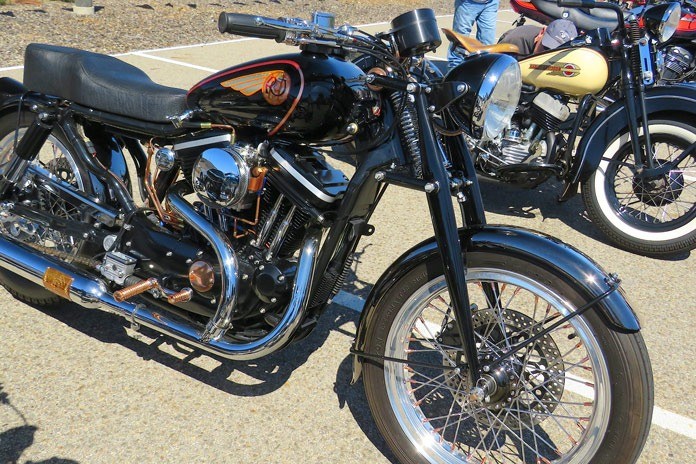
“It started as a challenge from a bunch of guys in a chop shop,” Jones said. “They wanted to know if I could turn a Sportster into something like a Vincent Black Shadow. And this is the result.”
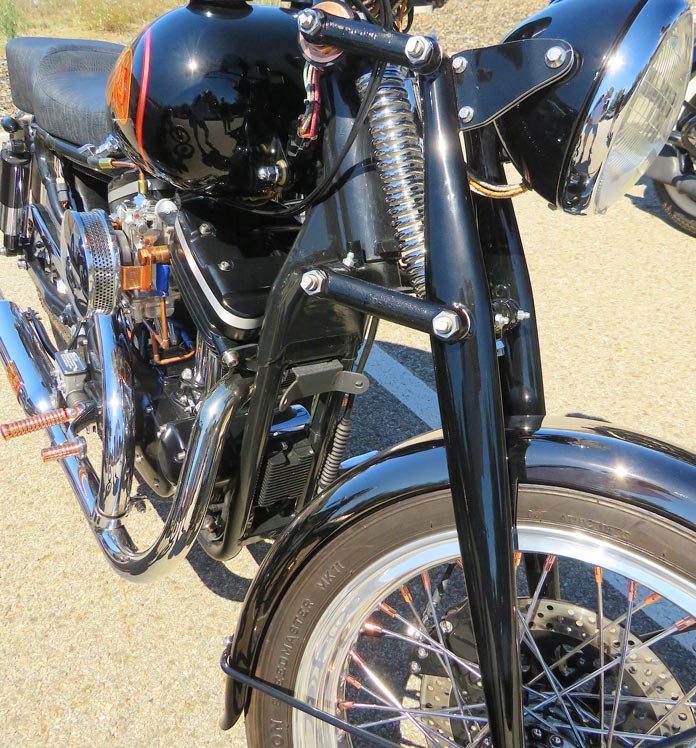
Jones’ custom features a front end of his own design. “I build Indian girder forks for replacement parts or customs that need a specific size.” Richard and his son Matt have a website at RJHRetroNation.com.

Bob Pogue of Lompoc had two entries in the Hand-Built class: a turbocharged ’72 Honda 500 Four and a ’69 Harley Sportster XLCH done up as an XR750.
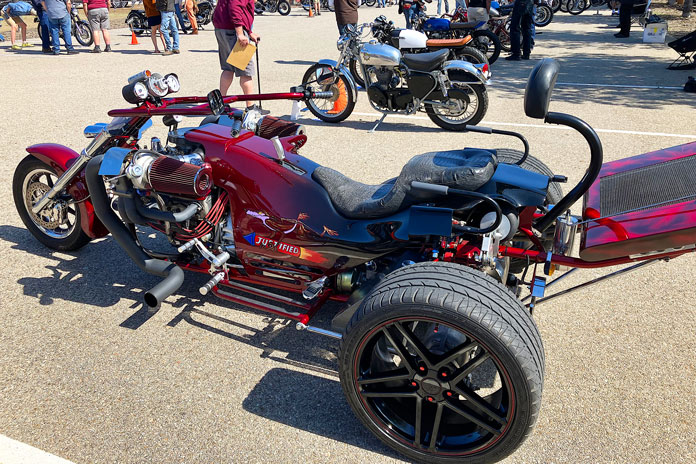
But the Hand-Built award ultimately went to Arizona’s Bruce Hanson and his twin-turbo Chevy V8-powered trike called “Justified.” Its Corvette engine was stroked to 383ci and makes 600 rear-wheel horsepower, transmitting power to a Jaguar differential. The trike weighs 1,100 lb and will allegedly go from 0 to 100 mph in three seconds. Bob’s wife says the passenger seat is quite comfortable. We will take her word for it.
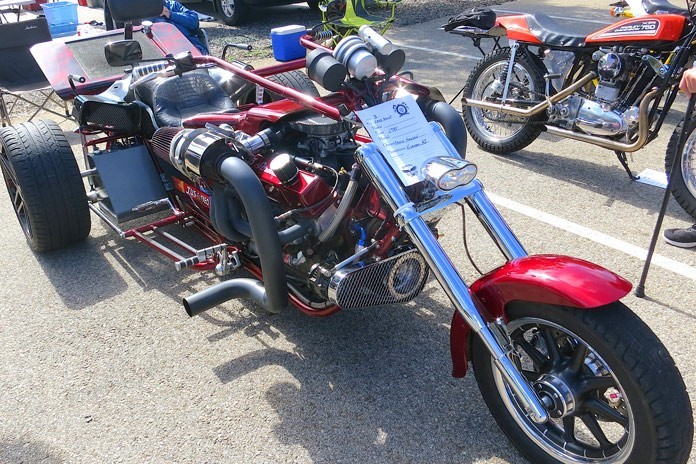
Gary Roper was down from Medford, Oregon, with his vintage roadracers: a 1951 Velocette 350 MAC and a ’26 Indian Scout with a 1936 engine, the latter taking top honors in the Roadracing category. Gary races both machines in American Historic Racing Motorcycle Association competitions and was headed to Birmingham, Alabama, for the season finale at Barber Motorsports Park. His race this summer at Laguna Seca was covered in the October issue of American Rider.
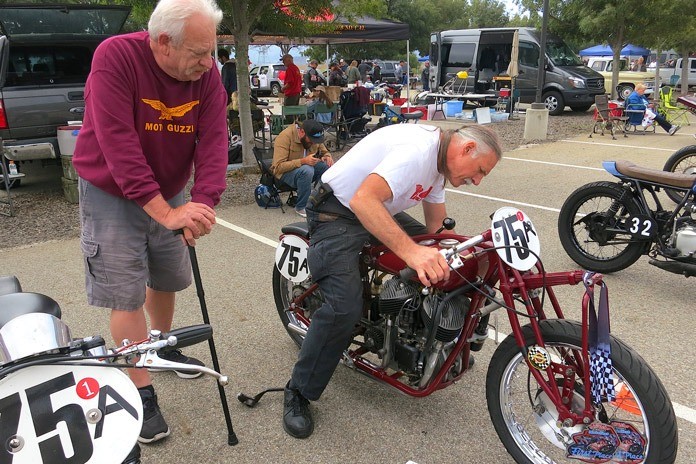
For complete show results, go to CentralCoastClassicMC.com.


